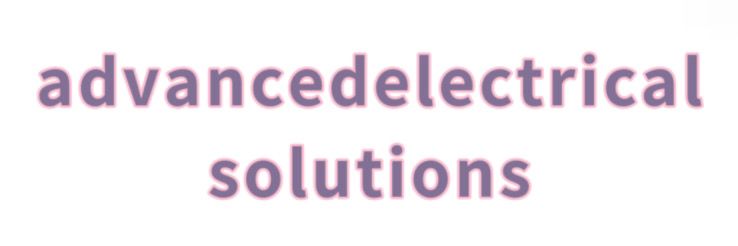A Comprehensive Guide to Three Phase Oil Immersed Transformers
Three phase oil immersed transformers are the backbone of modern electrical power systems. They are widely used in transmission, distribution, and industrial applications due to their high efficiency, reliability, and capacity to handle large loads. Understanding their construction, working principles, types, and applications is essential for engineers, utility operators, and industrial professionals.
This article provides a comprehensive guide to three phase oil immersed transformers, covering everything you need to know.
1. What Is a Three Phase Oil Immersed Transformer?
A three phase oil immersed transformer is an electrical device designed to transfer electrical energy between three-phase circuits through electromagnetic induction, while using insulating oil to cool and protect the windings and core.
These transformers are specifically designed for high-power applications, capable of stepping up or stepping down voltage levels in three-phase power systems. The oil serves as both an insulator and a cooling medium, helping the transformer handle high voltages safely and efficiently.
2. Key Components
A typical three phase oil immersed transformer consists of:
Core: Laminated silicon steel sheets form the magnetic core, reducing energy loss.
Windings: Copper or aluminum coils for primary and secondary circuits.
Insulating Oil: Mineral oil or synthetic oil surrounds the windings, providing insulation and cooling.
Tank: Houses the core, windings, and oil.
Conservator Tank: Allows for expansion and contraction of oil with temperature changes.
Cooling Fins/Radiators: Enhance heat dissipation.
Tap Changer: Adjusts voltage levels to maintain consistent output.
Protection Devices: Buchholz relay, pressure relief devices, and temperature sensors prevent damage from faults or overheating.
3. How It Works
The working principle of a three phase oil immersed transformer is based on electromagnetic induction:
Three-phase AC voltage is applied to the primary winding.
This generates a rotating magnetic flux in the core.
The flux induces voltage in the secondary winding, transferring power without direct electrical contact.
The insulating oil circulates naturally or is pumped in large units, carrying away heat generated by the core and windings, ensuring safe and efficient operation.
4. Types of Three Phase Oil Immersed Transformers
These Power transformers can be classified based on function, construction, and cooling methods:
A. Based on Function
Step-Up Transformers: Increase voltage from generation levels to high transmission voltages for efficient long-distance transport.
Step-Down Transformers: Reduce high transmission voltage to lower distribution voltages suitable for industries, commercial, and residential use.
B. Based on Construction
Core-Type Transformers: Windings surround the core; common in high voltage applications.
Shell-Type Transformers: Core surrounds the windings; better mechanical protection for low-voltage industrial applications.
C. Based on Cooling
ONAN (Oil Natural Air Natural): Natural circulation of oil and air; suitable for small to medium transformers.
ONAF (Oil Natural Air Forced): Oil circulates naturally; air is forced by fans to improve cooling.
OFAF/OFWF (Oil Forced Air/Water Forced): Oil is pumped and cooled using air or water; used for large power transformers.
5. Advantages of Three Phase Oil Immersed Transformers
High Efficiency: Efficient power transfer with minimal energy loss.
Additional reading:
Power Transformers: Definition, Types, and Applications
Ultimate Guide of Vacuum Resin Dry Transformers
Is Three Phase Dry Transformer Worth the Investment?Durable and Reliable: Can operate for decades with proper maintenance.
High Load Capacity: Handles large industrial and grid-scale power demands.
Effective Cooling: Oil cooling prevents overheating even under heavy loads.
Cost-Effective: Economical for medium and high-power applications compared to dry-type transformers.
Versatile Applications: Suitable for outdoor and indoor installations.
6. Applications
Three phase oil immersed transformers are widely used in:
Power Generation Plants: Step-up transformers to transmit electricity to the grid.
Substations: Step-down transformers for distribution to industrial, commercial, and residential consumers.
Industrial Facilities: Powering heavy machinery, production lines, and large electrical equipment.
Renewable Energy Projects: Solar farms, wind farms, and hybrid energy systems.
Infrastructure: Airports, railways, metro systems, and large commercial complexes.
7. Maintenance Tips
Proper maintenance ensures reliability and longevity:
Regular Oil Testing: Monitor dielectric strength, moisture content, and contamination.
Inspection of Bushings and Connections: Prevent leakage and voltage instability.
Temperature Monitoring: Ensure cooling system is working efficiently.
Cleaning: Keep radiators and fins free of dust and debris.
Tap Changer Maintenance: Verify correct voltage adjustment.
Protective Device Testing: Check Buchholz relay, pressure relief valves, and temperature sensors.
8. Future Trends
Smart Transformers: Integration with IoT for real-time monitoring and predictive maintenance.
Eco-Friendly Oils: Biodegradable, fire-resistant insulating fluids.
Digital Twin Technology: Simulate transformer behavior for optimized operation.
Compact and Modular Designs: Space-efficient solutions for urban substations.
Renewable Energy Integration: Optimized transformers for solar and wind power systems.
These trends make three phase oil immersed transformers safer, more efficient, and more compatible with modern smart grids.
Conclusion
Three phase oil immersed transformers are vital for efficient, reliable, and high-capacity power distribution. Their design, which combines oil-based insulation and cooling with robust core and winding construction, makes them suitable for a wide range of industrial, commercial, and utility applications.
Understanding their types, working principles, advantages, and applications is crucial for engineers, facility managers, and utility operators to ensure safe, long-lasting, and efficient electrical systems.



Comments